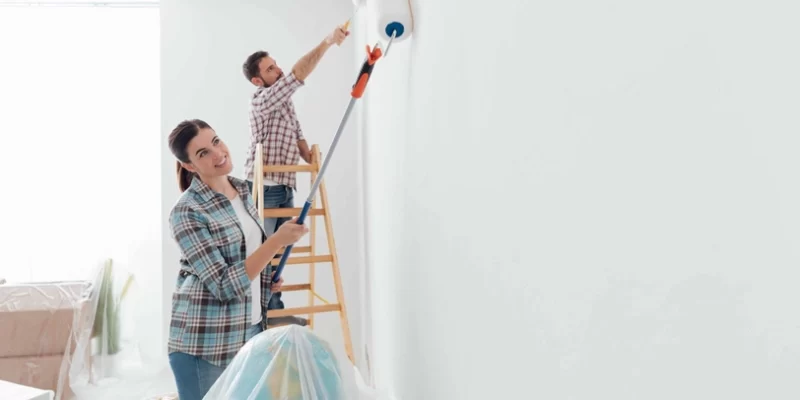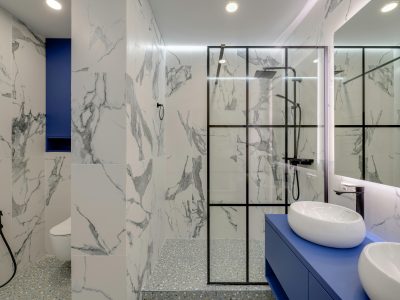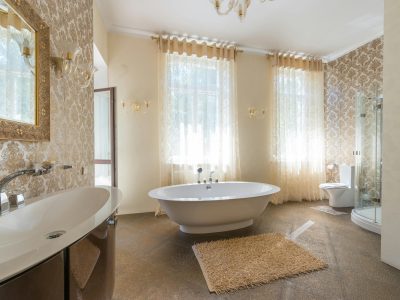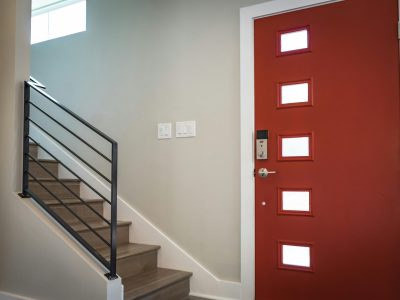This article will show you how to paint GIB Board.
Do you plan to paint your GIB board to decorate your wall? You can do it yourself if you don’t want to hire a professional painter.
It’s not difficult to learn how to paint a GIB or plasterboard. You need to be careful about certain things to achieve the best results.
This article will explore this topic in greater detail.
How do I prepare a GIB Board before painting it?
To ensure a smooth painting job, all jobs need preparation. Painting GIB Boards is no different.
Filling the board joints is the main task you’ll have to perform before painting. It is important to make sure there are no visible depressions, as this will help you to reduce scuffing on the board surface.
You will also need paper joint filling tape and plasterboard joint filler (powder or ready mixed). Paper joint filling tap and plasterboard joint paste (powder, ready-mixed) are also required.
Be sure to fill all joints before painting. You will need to apply many layers, with a paper-tape layer between the second and first layers.
You will then need to feather in the edges. After you have done this, the edges will be feathered in to create a seamless and smooth covering.
This will be invisible to the naked eye after you have painted the plasterboards. There are three types of joint filling: standard joint filling (internal joint filling), external joint filling and standard joint filling.
You will have no more hard edges and the joints will all be filled. After sanding, the corners, fixings and cornice will have a smooth, even finish. Now that your GIB boards have been sanded, they are ready for paint.
Is it necessary to seal GIB before painting?
GIB or plasterboards are porous and can be even more so than bare plaster. Yes, seal the surface with a mist coating before applying any final coats of paint. This will help to ensure that all of your finishing coats adhere correctly and won’t flake off.
What is a mistcoat? A mistcoat is simply a matte emulsion painted that has been watered down. A mistcoat is made by mixing paint with water in a ratio of 4:1 (four parts paint to one part water). You must wait for the paint to dry before applying it.
After it has dried, apply it to all surfaces of the GIB boards that you want to paint. It is best to apply it in two layers, and let the first one dry before applying the second. Once the second coat has dried, you can add the finishing or topcoats.
How should I paint a GIB Board?
You can paint GIB boards in three different ways.
- Brush: Although the most popular method, painting plasterboards with a paintbrush takes a long time. This method does not provide a textured finish that will smooth out the substrate, and it only covers minor imperfections. We recommend using a brush to cut in the edges.
- Spray painting: Spray painting is 20% faster than painting with a brush. This method requires you to back-roll each coat of paint while it is still wet. It is important to do this in order to achieve a textured surface that will hide imperfections and provide continuity between GIB boards, as well as the walls. The downside is you can’t protect things like windows and cabinets from being overspread.
- Rolling: Rolling is the most efficient method. Roll on a sealer, followed by two topcoats of the desired color.
What is the best finish for GIB boards to give?
There are three different levels of finish in AS/NZS2589:2007 for Gypsum plasterboards. There are three levels of finish for Gypsum linings plasterboards.
- Level 3: This level is used for areas where no decoration or painting is required, such as areas above ceilings or inside service shafts. It is not important how these areas look.
- Level 4: This is the standard finish level for plasterboard. It is used in areas that will be painted or decorated normally. Unless otherwise stated, this is the default standard finish level for GIB board.
- Level 5: This is the most advanced level of finish available for plasterboard. It is only done when you want a surface as free of surface defects as possible.
This article will help you learn more about the level finishes.
What kind of paint is best to use for GIB boards?
Mist coat is a matte emulsion, and as we have already mentioned, it is the best method to paint gib board. You can find the water-based matt emulsion in most stores. You may be wondering why the water-based emulsion is best for plasterboards.
The plaster will adhere and bond with a water-based matt matte emulsion. This will provide a solid base on which to build. This type of paint will allow the plaster underneath the boards to breath, which means that it will not trap moisture and cause damp spots and other issues.
We also recommend using a matt that is lighter in color, preferably white. The matt should be light in color to provide a base for your top coat.
What kind of paint should you not use on your GIB boards?
We’ve already told you which paints you shouldn’t use on your GIB boards. We said earlier that you can’t just use any matt emulsion. Use only the water-based emulsion. You should not use any other matt emulsion.
Avoid using vinyl or silk paints on your GIB board at all costs. These paints dry out and form an odd skin on top of plaster. They will flake or peel off easily, so you’ll have to start over. PVA is not recommended as a sealer. It’s waterproof so it won’t allow the paint to soak into the plaster. For more info about – Gib fixers in Wellington.













Comments